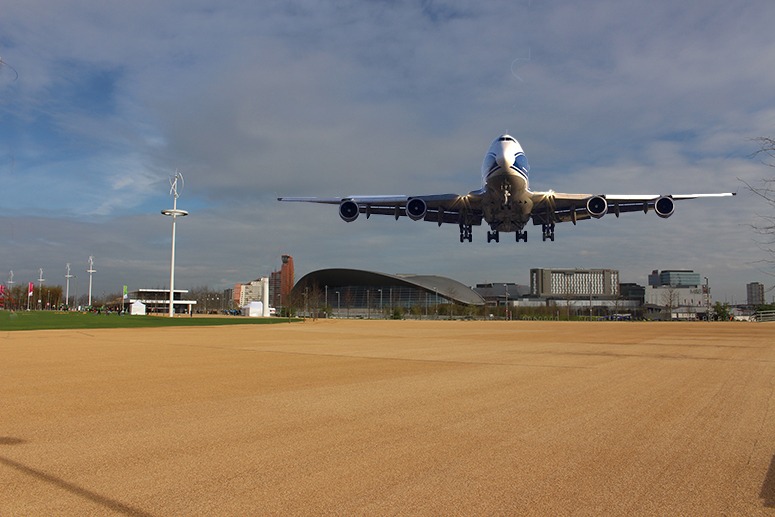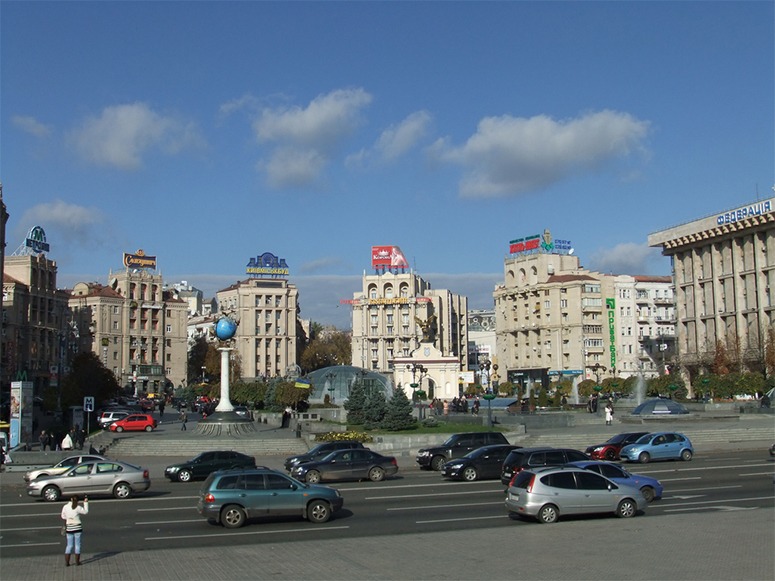Which is the best Royal Park for garden-loving visitors? The more I think about London’s Royal Parks, the better I like them. So I can’t give a favourite. But if a gardening friend was coming to London and said ‘I’ve only got time for one Royal Park – which should it be?’ I would say ‘Regent’s Park’. If an architect or urban designer asked me the same question I would give the same answer. The two most astonishing things about Regent’s Park, for me, are that no urban expansion scheme of the twentieth century equaled its quality – and that Modernist architects wanted to knock down the Nash terraces in the 1950s. The above video shows some of the things I love about Regent’s Park.
Category Archives: Public parks
Lee Rigby Memorial bikers ride from Greenwich Park to Woolwich 22 May 2015
In addition to many other design objectives, public parks should be designed as good places to hold public events and demonstrations. The main avenue in Greenwich Park was not designed for this purpose but serves it very well, as here for a memorial event for a British soldier, Fusilier Lee Rigby of the Royal Regiment of Fusiliers, who was attacked and killed by Michael Adebolajo and Michael Adebowale near the Royal Artillery Barracks in Woolwich. Rigby was off duty and walking along Wellington Street. Two men ran him down with a car, then used knives and a cleaver to stab and hack him to death. Armed police officers arrived five minutes later. The assailants, armed with a gun and cleaver, charged at the police, who fired shots that wounded them both. They were apprehended and taken to separate hospitals. Both are British of Nigerian descent, raised as Christians, who converted to Islam (info from Wikipedia).
Is Greenwich Park London’s most interesting Royal Park?
I think the answer is ‘yes’ – and it should certainly be included in London garden tours. For a start, it is the oldest of London’s Royal Parks. Greenwich has associations with the period in British history most loved by the BBC and English schools. Only the 1930s and ’40s rival the Tudors.
Greenwich was enclosed by Duke Humphrey of Gloucester, who also built what became the Royal Palace of Placentia. Henry VIII was born here. So was his daughter, Elizabeth I. The design and the design history are also of great interest. Greenwich Park began as a late-medieval Hunting Park with an Early Renaissance garden. It was then influenced by the Baroque Style in the seventeenth century by the Serpentine style in the eighteenth century and by the Gardenesque Style in the nineteenth century. The green laser beam is a Post-Abstract twenty-first century addition – and a great idea. The designers who influenced the park include Inigo Jones, André Le Nôtre, John Evelyn Christopher Wren, Lancelot Brown and John Claudius Loudon.
Queen Elizabeth II Olympic Park London: a review of the landscape architecture by Robert Holden and Tom Turner
This video review of the QE Olympic 2012 Park, by Robert Holden and Tom Turner, comprises a discussion on 29th June and video footage taken on 29th and 30th June. Mainly a review of the master planning, the two landscape architects spent too little time on the park’s often-very-good detailed design. Our fundamental point is that ‘the landscape planning is much better than the landscape design’. The landscape planning includes the opening up of the River Lea in the northern section of the park, the habitat-creation strategy and the park’s excellent links with its hinterland. The landscape design is dominated by vast pedestrian concourses which will be busy during events but will resemble unused airport runways on every other occasion. There is some good garden-type planting but it has not been used to make ‘gardens’: it is used more like strips of planting beside highways.
The designers were EDAW/Aecom, LDA Design with George Hargreaves.
Comments welcome.
Has the Olympic Development Authority designed a new London airport in the QE Olympic Park

A 747 comes in to land on the main runway at London’s Olympic Airport. The Terminal, designed by Zaha Hadid, was previously an Aquatic Centre
A 747 pilot mistook a footpath in the Queen Elizabeth Olympic Park for a runway and the Aquatics Centre for an Airport Terminal. The passengers disembarked safely. After a short walk to Stratford International Station many remarked that it was a much easier journey into London than from Heathrow, Stansted or Gatwick airports. A journalist on board contacted the Civil Aviation Agency. No one was available for interview but a spokesperson issued a written statement saying that the plane must have ‘come in below the radar’. Another spokesperson, for the Olympic Development Authority, said they wanted to generate revenue from the Park and it was only a trial. One wonders.
The landscape architecture of Maidan Nezalezhnosti = Independence Square Kiev
- go for the Baroque, as so many communist leaders did (left above)?
- spend on bling, as was done in Kiev? (below)
- keep the space clear, to facilitate future revolutions (right above)?
It was the ‘square’s’ name which made me wonder about the alternatives. ‘Maidan’, I assume, is a Persian word which, I guess, was brought to Kiev by the Tartars. They were a Turkic people and the Turks, as former nomads, learned much from the urban civilisation of Persia (just as the Persians, also formerly nomadic, learned from the urban civilisation of Mesopotamia). See photos of the Maidan in Isfahan – it was a space used for markets, games of polo and military displays. The present square dates from after the Tartar period and took its present form after the Second World War. In 1919 it was Soviet Square and in 1935 it became Kalinin Square. The present name came with independence in 1991. Please correct me if I am wrong but I think the bling (fountains, planters etc) appeared after the Orange Revolution of 2004. [Note: one can’t help wondering if the re-design proposal for Gezi Square is, in part, an idea for how to prevent public spaces being used by revolutionaries). If so, please could we know the designers’ names.
Should the Maidan be re-designed to take account of the latest revolution?


